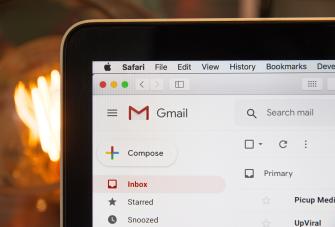How to Market a Small Business On a Budget
So you’ve just opened your business. You’ve set up your retail store, restaurant, or hotel, and you’re wondering how to market your small business so that people know about all the great things you’re doing. You’re not alone. Marketing and raising awareness for your business is a massive challenge that most business owners struggle with [1].
It becomes more and more expensive to acquire new customers every year [2]. As a small business owner, you’ll want to find a way to attract new customers that is effective and affordable. This guide will tell you all you need to know about marketing a small business on a budget.
What is marketing?
Before we get started on how to market your small business, we need to establish what marketing actually is. Marketing, contrary to popular belief, is more than just advertising.
Marketing is a process that informs all the identifiable aspects of branding, like advertising, design, and events. According to the American Marketing Association, marketing is “the activity, set of institutions, and processes for creating, communicating, delivering, and exchanging offerings that have value for customers, clients, partners, and society at large” [3].
As you can imagine, this definition can encompass lots of activities. So when you’re thinking about how to market your small business, an open mind can be very beneficial - there may be ways to help you raise awareness for your business without relying on traditional methods.
Create a marketing plan
Before you start any marketing activities, you need a marketing plan. Having a marketing plan will crystalize what you want to do with your marketing and help you achieve your goals.
A good marketing plan should include:
- A situation analysis: This is an analysis of your business’s current situation; its strengths, weaknesses, opportunities, and threats; an analysis of your competition; and an analysis of how your business fits into the market (i.e. what can you do better than your competitors?)
- Your target audience: This is an outline of who your ideal customer or audience is. This can be expressed in buyer personas - fictional representations of the types of customers you want to attract [4]. These personas should include information like pain points and goals - what do your customers want, and how can you meet that demand?
- SMART goals: Every business needs goals. However, the goals in your marketing plan should be SMART (specific, measurable, attainable, relevant, and time-bound). An example of a SMART goal would be to increase the number of online orders of a single product by 20% by Q3 of the next financial year.
- Your tactics: In the rest of your marketing plan, you’ve outlined your situation, customers, and what you want to achieve. Now, you need to outline how you’re going to accomplish those things. For example, if you want to increase online sales for that one product, you might want to develop a targeted sale to select customers for that item.
Having a marketing plan is a great way to keep yourself accountable and focus on what you want to achieve with your marketing.
Develop an elevator pitch
An elevator pitch is a summation of your business in 2-3 sentences that you could deliver to someone in the span of an elevator trip.
Why would you want to develop an elevator pitch? You never know when you might be in a situation where you need to pitch your business to a potential investor. It will also come in handy when you’re asked to describe your business to new customers.
Build a website
Every business needs a website. It would help if you had a place where people can find out everything about your business, including your products and services, prices, opening and closing times, contact information, and more.
There are many low-cost hosting services with great templates that you can use to get your website started. If you’re a restaurant or retail service, you may want to consider using Epos Now’s website builder, with hundreds of features, e-commerce integrations, and more to help get your online store off the ground.
Use social media
If you’re strapped for cash and looking for a cheap way to communicate and interact with your customers, you’ll want to use social media. Platforms like Facebook, Twitter, Instagram, Snapchat, LinkedIn, Pinterest, and TikTok allow you to create great content and interact with your customers in new, interesting ways. Allow customers to contact your business online, create your very own trending hashtag, and formulate beautiful influencer marketing campaigns. Most of these platforms are completely free to use.
Using the buyer personas you created for your marketing plan, figure out which platform your ideal customers would be most likely to use and interact with them there.
Buy search ads
Search engines like Google and Bing offer businesses affordable advertising options to promote their products and services: text ads that appear in search results, for example.
You can bid on specific keywords (search terms entered into a search engine) relevant to your business and develop clever, eye-catching ads to lure searchers to your product and landing pages. You can use free tools like Google Keyword Planner to help you identify popular keywords and Google Trends to help you determine which keywords are gaining prominence in search queries.
This will attract newcomers who are interested in a specific product or require a specific solution to your website,
Search engine optimization
Search engine optimization (SEO) is the process of making your online content more attractive to search engines like Google and Bing. According to SEO best practices, well-maintained websites are more likely to rank higher in search results, thereby increasing your business’s exposure to potential customers.
To do effective search engine optimization, you need:
- A website that is well-maintained and follows SEO best practices [5]
- Keywords relevant to your business, including
- Brand keywords (your business name and proprietary products and services)
- Short-tail keywords related to your business: short keywords, made up of 1-3 words, that are related to your business. For instance, if you’re a car dealership, one of your short-tail keywords may be ‘used car’
- Long-tail keywords related to your business: keywords made up of more than three words. For a car dealership, a long-tail keyword may be something like ‘where can I buy a used car’
Blogging
One of the best ways to build your authority in a particular area is to start a blog. In your blog, you can write about any aspect of the business you like, from offering helpful tips to your customers, business updates, detailing useful information your peers may be interested in, and more.
Most commercial websites will give you an option to have a news/blog section on your site. Writing blogs around your relevant keywords will also help a lot with your search engine optimization.
Email marketing
Email marketing is still one of the most cost-effective ways to reach people who are already interested in your product. Once you’ve compiled your mailing list, you can email regular updates to your customers about your products or services. You must have permission before you add them to a regular mailing list, but sending initial communication is fine. Permission is gained by allowing customers to sign themselves up to your mailing list, perhaps through a pop-up on your website or social media.
The Epos Now integration with the Mailchimp app makes it easy to keep in touch with, develop, and grow your mailing list. Develop targeted campaigns, take advantage of detailed analytics, and use automation to drive repeat business.
Register on Google My Business
Registering your Business on Google My Business will create a permanent record of your business on the search engine. It will also create a unique business listing that will appear when someone searches for your business name and will register the location of your business on Google Maps.
Collaborate with other businesses
Small businesses need to look out for each other. Without help, many small businesses will sink against the pressures of commerce and competition. Rather than trying to out-compete each other, it makes sense for many businesses to work together to drum up business in their local area.
Let’s say you’ve opened a great new café, but business is slow. You could work with local merchants to promote each others’ services. Speak to the owner of the nearby laundromat to see if you can promote your products by offering them your branded coffee while they wait for their laundry to finish. Or, speak to the local bookshop owner to see if they will promote your café in exchange for a display of their books in your establishment.
Set up a rewards program through your EPOS system
One of the best ways to get and retain customers is to develop a rewards plan. Whether you’re a retail or hospitality business, you probably need a loyalty program to help get people back through your doors. With app integrations with Loyalzoo and Loyalty, you can:
- Deliver automatic loyalty points as orders are completed
- Take advantage of digital loyalty cards on smartphones
- Drive repeat business with customized marketing messages
- Send limited time promotions directly to your customers’ phones
- Track customer behaviour with detailed analytics
Contact Epos Now to find out more about our amazing EPOS systems.
You may also be interested in:




